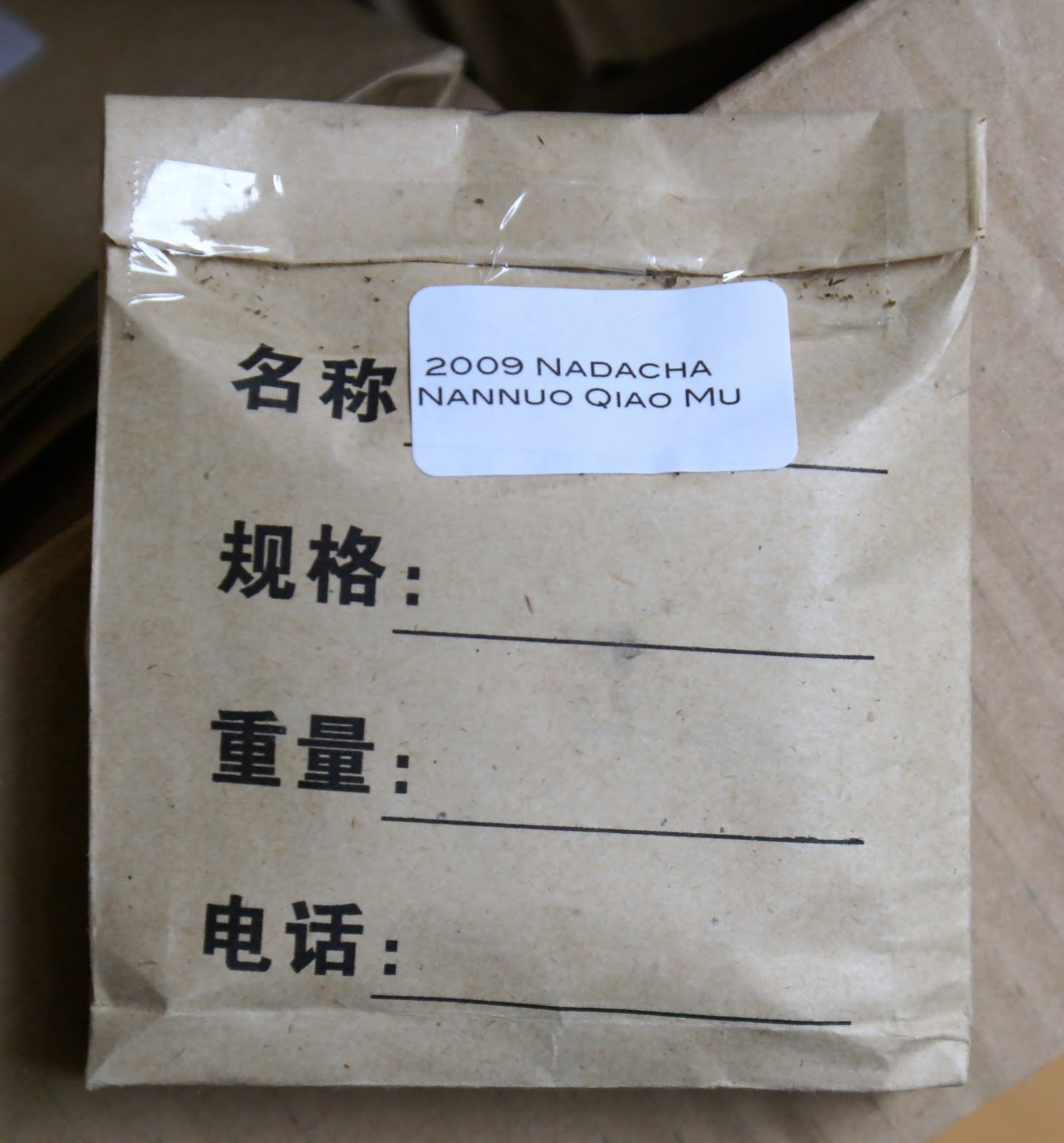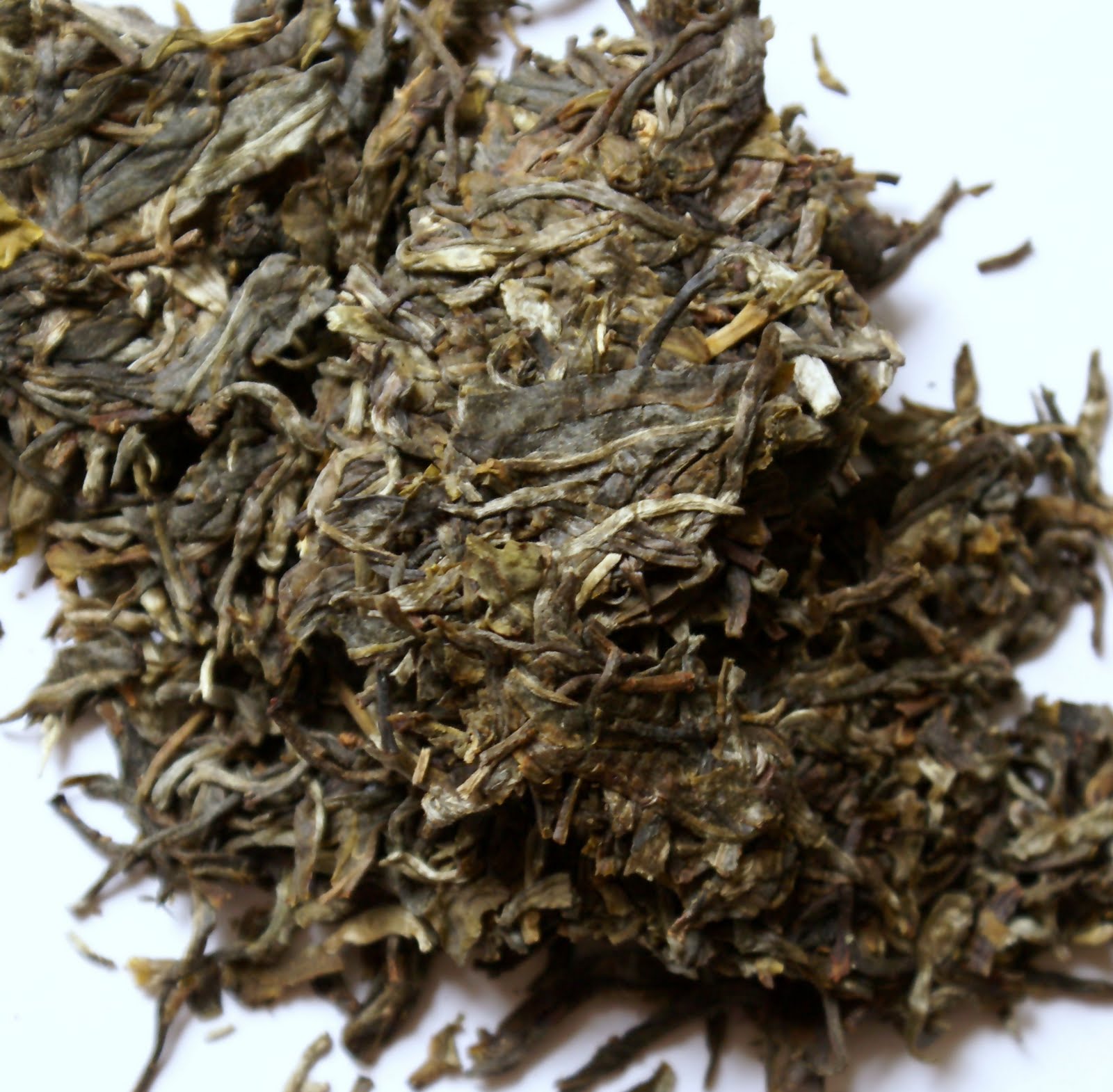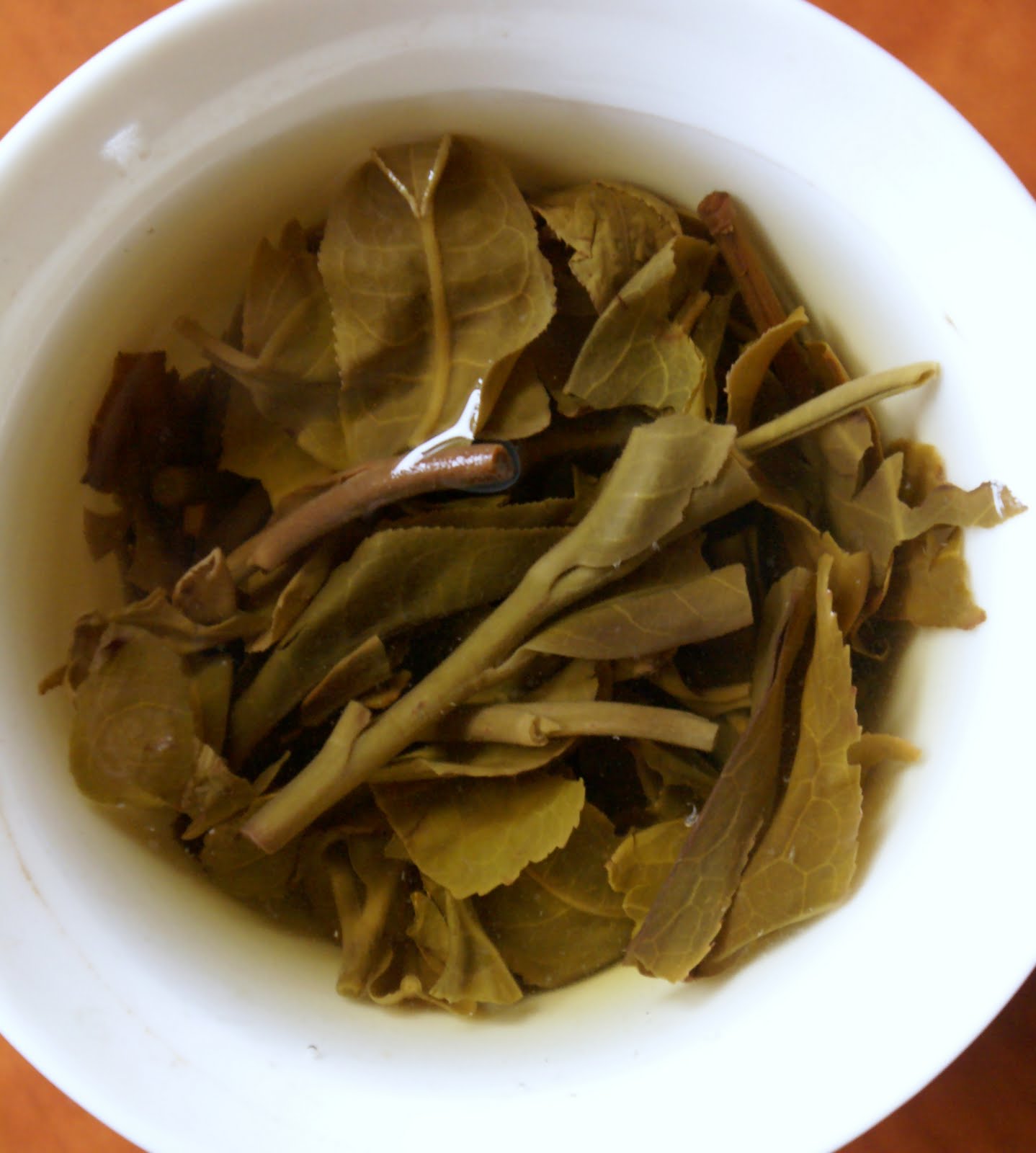2009 Nada Nannuo Qiaomu
The 2010 releases are expected in a few weeks’ time (see Nada’s Essence of Tea website), but in any instance you’ll need to hurry as these cakes tend to sell out extremely quickly. Last year, the four labels were out in a matter of days. I was late, and all I could pick up was a set of samples of the Naka, Bulang, Nannuo Old Tree and Nannuo Plantation. (I later got two cakes on the secondary market but had to pay over three times the release price: the latter is actually very competitive, adding to the fever of securing these teas).
Here’s a look at the 2009 Nannuo Qiao Mu cake (the original price was £18 / 357g cake). The leaves are small, clean, impeccably sorted, with a medium loose compression and separating rather easily from the sample. They have an intense if rather elegant aroma of dried autumn leaves, sweet tobacco, but mostly sweet peaches: it’s an unexpected and exciting aroma to find in a puer tea.
I brew this with a conservative dosage of 3g / 80ml in a porcelain gaiwan. The colour is not so light: orange-peachy. And it’s peaches again that dominate the brewed tea aroma. The taste is smokey and dry, not as vegetal as young sheng often is. Clean and invigorating, and not too aggressive; with short steeping this tea is very easy to control bitterness-wise.
The second brewing is a delight: remarkably fruity for a young sheng, with plenty of apricots and peaches filling out a broad palate before a slightly dry (but everything but bitter) finish. As the fruit gently fades over the next few rapid infusions, the register shifts towards a bone-dry, no-nonsense, structured puer with barely an impression of tannic dryness like in a very good red wine; no real bitterness. Infusion #4 also releases an amazing buttery texture close to a gaoshan oolong from Taiwan. At the seventh brewing I give up (the tea doesn’t).
The leading impression with this tea is purity. It is crisp, energetic, leaving the mouth refreshed and cleansed. The leaf selection is impeccable. It is remarkably approachable for a young sheng, though exactly the opposite of an oolonged early-drinking factory stuff. Impressive (and imressively direct) puer. It will be exciting to receive the 2010s from Nada (this year, I’m on the reservation list).
Disclaimer
Source of tea: own purchase.




